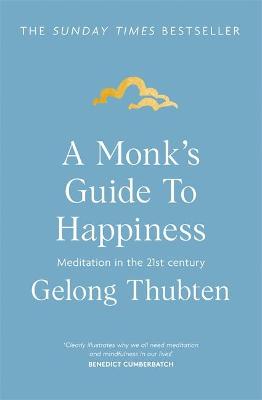
The Global Meditation Movement plans to hold mass synchronized meditation sessions bimonthly. This is to create a global space for the practice. Their first Australian event will be held on Monday, September 9th at 9pm AEST. This is a show of solidarity. The event will be open to the public and is free. The goal is for one billion people to be reached in 24 hours. To make it more easily accessible, the group will post a message about their global meditation project on their website and Facebook page.
There are many ways to participate in global meditation. Participation in the Universal Hour of Peace and World Meditation Day are two options. Both events are designed to encourage peace in the world. These organizations facilitate meditations worldwide and encourage participants in a range of events. Some of the most notable events include the International Day of Mindfulness. The World Healing Day, Peace One Dharma, the Global Marathon, and the World Healing Day. These events all encourage the public to participate in a variety of meditative activities.

World Meditation Day has one goal: to promote meditation. There are many ways to meditate. Some people combine physical activity with meditation, while others prefer to practice silently. Whatever your preference, meditation has many benefits. Keep in mind that meditation should be done on a regular schedule, if possible daily. Regular meditation will help you to reap the benefits.
Meditation is not only good for an individual but also for society. Meditation can be practiced in many forms, from ancient to modern. Zen, Hinduism, Buddhist and Hindu meditations are the most commonly used. The most popular form of meditation is Zen. However, it has a wide range of methods and is widely practiced in many areas. No matter whether you meditate Zen or Buddhist, you will find it an effective way improve the quality of your daily life.
Global meditation is possible anywhere and anytime. Focusing on deep breathing will clear the mind of all thoughts. After clearing the mind of all thoughts, one can acknowledge and then continue to breathe deeply. This practice encourages mindfulness. Meditation can help people feel more peaceful and content. Meditation can be practiced anywhere, even if you are new to it.

Global meditation can reduce stress, improve focus, and enhance connection. It also helps reduce brain chatter. You can also connect with your partner or your surrounding. You should meditate in a quiet place, without distractions. It is important to find a quiet, peaceful place to meditate. It is important to feel at ease and secure wherever you meditate. If you are unsure of the best method to meditate, then you should try all the options first to determine which one is most comfortable.
FAQ
How does weight change with age?
How do I know if my bodyweight changes?
Weight loss occurs when there is less fat than muscle mass. This means that you must consume more calories than you use daily. Low activity levels are the most common cause for weight loss. Other reasons include poor eating habits, stress, hormone imbalances, certain medications and illness. If there is more body fat than muscle mass, then weight gain can occur. It happens when people eat more calories than they use during a given day. Overeating, increased physical activity and hormonal changes are all common reasons.
Our bodies lose weight because we eat fewer calories than we burn. Exercise regularly increases your metabolism rate, which allows you to burn more calories every day. But this doesn't guarantee that we'll lose weight. All that matters is whether we're losing weight or gaining muscles. If we are burning more calories than what we eat, then we will lose weight. However, if we consume more calories than we burn, we end up storing them as extra fat.
As we age, we become less agile and don't move as often. We also tend eat less than we used to. Also, we are more likely to gain weight. We also tend to look larger because we have more muscle.
There's no way to tell how much weight you've lost unless you weigh yourself every week. There are many methods to measure your weight. You can check your waist size, your hips, your thighs, your arms, etc. Some people prefer using bathroom scales and others prefer tape measure.
For a better track of your progress, try to weigh yourself once per week and measure your waistline once every month. You can also take photographs of yourself every few years to track how far your progress has been.
You can also look up your height, weight and body measurements online to determine how much you weigh. If you're tall at 5'10", and weigh 180lbs, your weight would be 180.
How can I get enough vitamins?
The majority of your daily needs can be met through diet alone. Supplements are available if you are deficient. A multivitamin supplement can provide all the vitamins you require. You can also buy individual vitamins in your local drugstore.
Talk to your doctor about the best foods for vitamins if you're concerned about not getting enough nutrients. Dark green leafy vegetables like spinach, broccoli and kale, as well as turnip greens and mustard greens such as turnip and mustard greens and bok choy, are rich in vitamins K & E.
Ask your doctor if you're not sure how many vitamins you should take. The doctor will determine the proper dosage based upon your medical history as well as your current health.
How can I lower my blood pressure
Find out the causes of high blood pressure first. Next, you will need to determine what is causing high blood pressure. This could be as simple as eating less salt, losing weight, taking medications, etc.
Exercise is also important. If you don't have time for regular exercise, then try walking as often as possible.
If you're unhappy with the amount of exercise you do, you might consider joining a fitness club. A gym that has other members who are motivated by your goals will be a good choice. It's much easier to follow a routine if someone is with you at the gym.
How does an anti-biotic work?
Antibiotics are drugs which destroy harmful bacteria. Antibiotics are used to treat bacterial infections. There are many types and brands of antibiotics. Some can be taken orally while others are injected. Others are topically applied.
People who have been exposed may be prescribed antibiotics. For example, if someone has had chicken pox, he or she might take an oral antibiotic to prevent shingles later on. Or, if someone has had strep throat, he or she might receive an injection of penicillin to help prevent pneumonia.
When antibiotics are given to children, they should be given by a doctor. Children are at greater risk than adults for developing serious side effects from taking antibiotics.
Diarrhea is the most common side effect from antibiotics. Other possible side effects include stomach cramps, nausea, vomiting, allergic reactions, headaches, dizziness, and rashes. These side effects are usually gone once the treatment is complete.
Statistics
- According to the 2020 Dietary Guidelines for Americans, a balanced diet high in fruits and vegetables, lean protein, low-fat dairy and whole grains is needed for optimal energy. (mayoclinichealthsystem.org)
- nutrients.[17]X Research sourceWhole grains to try include: 100% whole wheat pasta and bread, brown rice, whole grain oats, farro, millet, quinoa, and barley. (wikihow.com)
- WHO recommends consuming less than 5% of total energy intake for additional health benefits. (who.int)
- This article received 11 testimonials and 86% of readers who voted found it helpful, earning it our reader-approved status. (wikihow.com)
External Links
How To
What does the word "vitamin" mean?
Vitamins are organic compounds naturally found in food. Vitamins are essential for our bodies to absorb nutrients from the foods we eat. Vitamins cannot come from the body so food must provide them.
There are two types if vitamins: water soluble, and fat soluble. Water-soluble vitamins dissolve in water easily. These include vitamin C (thiamine), Vitamin B1 (riboflavin), Vitamin B2 (riboflavin), Vitamin B3 (niacin), Vitamin B6 (pyridoxine), Vitamin C, B1 (thiamine), Vitamin B2 (riboflavin), Vitamin B3 (niacin), and Vitamin B6 (pyridoxine). Fat soluble vitamins are stored in the liver and fatty tissue. Examples include vitamin D, E, K, A, and beta carotene.
Vitamins are classified according their biological activity. There are eight major categories of vitamins.
-
A - Essential for healthy growth and health maintenance.
-
C - essential for nerve function and energy generation.
-
D - necessary for healthy bones and teeth.
-
E - Required for good vision & reproduction
-
K - Required for healthy nerves and muscles.
-
P - Essential for strong bones and teeth.
-
Q - aids digestion, absorption and absorption iron
-
R - Red blood cells are made from red blood cells.
The recommended daily allowance (RDA), for vitamins, varies depending upon age, gender, or physical condition. The U.S. Food and Drug Administration has established the RDA values.
For example, the RDA for vitamin A is 400 micrograms per dayfor adults 19 years or older. However, pregnant women need 600 micrograms per day because it is important for fetal development. Children ages 1-8 require 900 micrograms per day. Infants below one year old require 700mg per day. But, between 9 months to 12 months, the amount drops to 500mg per day.
Children between the ages of 1-18 need 800 micrograms per daily for obesity, while children overweight require 1000 micrograms. Children underweight or obese will need 1200 mg per day.
Children ages 4-8 years who have been diagnosed with anemia need 2200 micrograms per day of vitamin C.
2000 micrograms per person is necessary for general health. Breastfeeding or pregnant women require 3000 micrograms per daily due to higher nutrient demands.
Adults over 70 need 1500 micrograms daily, as they lose 10% of their muscle every ten years.
Women who are pregnant or lactating need more than the RDA. Pregnant and breastfeeding women require 4000 micrograms each day during pregnancy and 2500 Micrograms each day after delivery. Breastfeeding moms need 5000 micrograms each day when breastmilk production occurs.